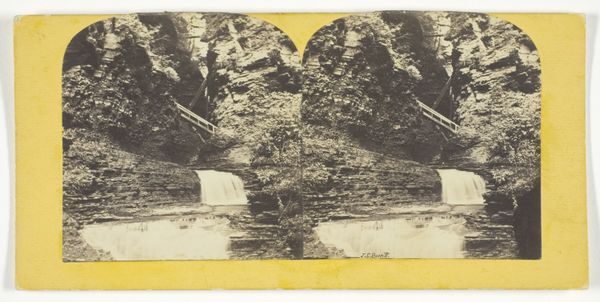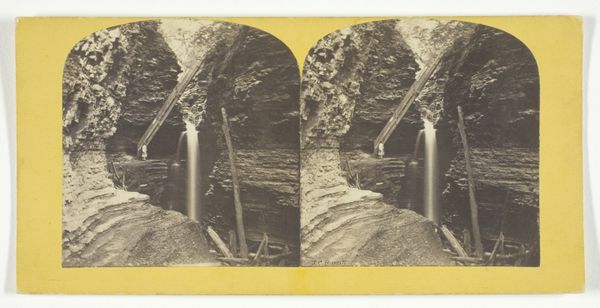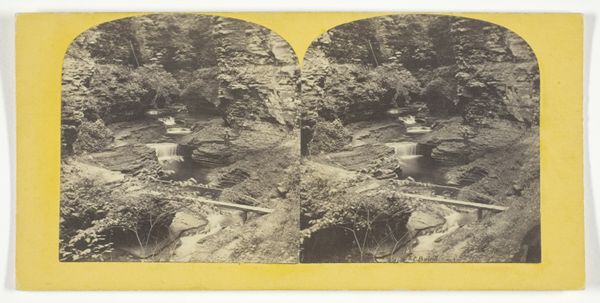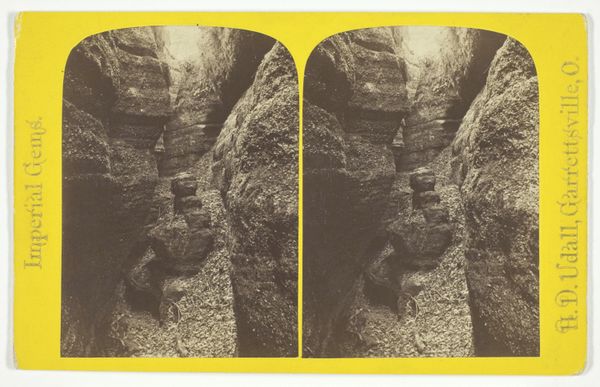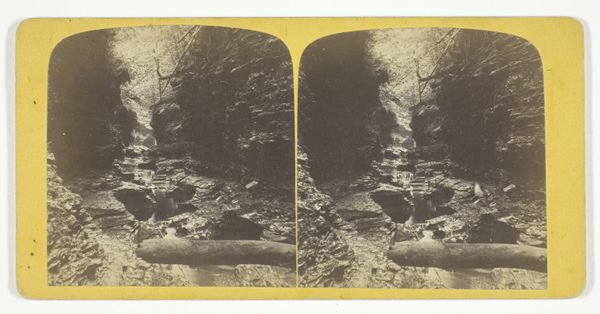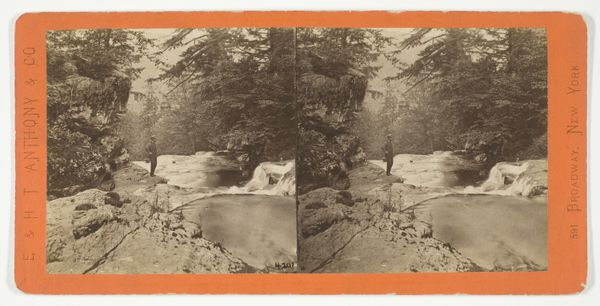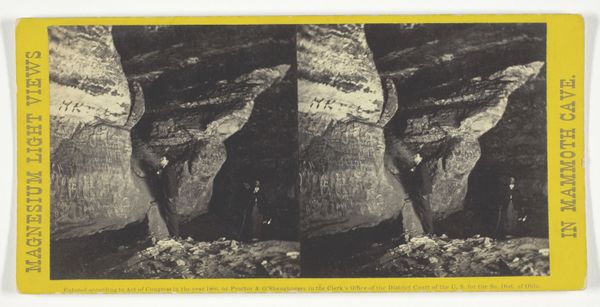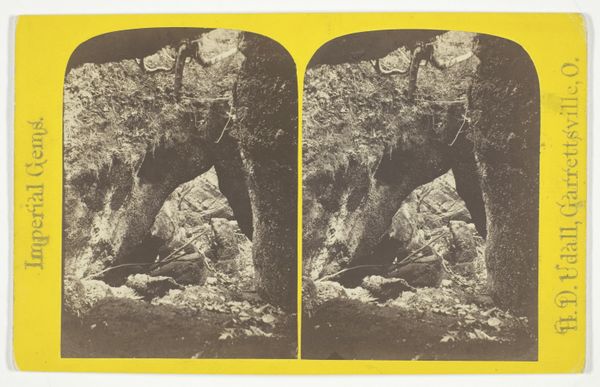
silver, print, photography, photomontage, albumen-print
#
16_19th-century
#
silver
# print
#
landscape
#
natural composition
#
photography
#
photomontage
#
albumen-print
#
realism
Dimensions: 7.5 × 7.2 cm (each image); 8.4 × 17.1 cm (card)
Copyright: Public Domain
Curator: Here we have J.C. Burritt’s "Freer Glen at Watkins View of Upper Glen," dating from around 1860 to 1865. It’s an albumen print photomontage, showcasing early photographic techniques. What strikes you first about it? Editor: The immediate feeling is one of overwhelming, almost claustrophobic enclosure. The deep shadows and stark contrasts add to the drama of the compressed space. I feel swallowed by the landscape, in a way. Curator: It’s a striking piece in that regard. Watkins Glen, the location in upstate New York, was already a popular tourist destination. Images of the landscape circulated, contributing to the rise of interest in this very notion of ‘picturesque’ wilderness. These photographs helped build an idea. Editor: Right. And, I mean, photographs from that time circulated to invite tourists. Think about this for a minute. They had to construct a romantic view of nature that wasn't real! Curator: Indeed. Beyond the circulation of images for tourist revenue, it also participates in a long tradition of landscape art, of course. Here we have photography being enlisted as a means of portraying this very kind of romantic, even sublime experience. We could think about the association with concepts of American identity in a moment where photography began to capture everything and reshape it. Editor: Well, and it isn’t a straightforward landscape. We see a layering and manipulation here that plays into those constructions. In early photography, photomontage often allowed photographers to overcome some limitations, producing an image with more clarity and dramatic composition than they could capture in a single shot. What might those challenges represent in a symbolic sense? Curator: That tension is crucial. This work offers a very real, albeit constructed, vision. In those rocky faces, in the water's course, there’s this ongoing creation of landscape as artifact of geological and cultural forces. Editor: This image then, isn’t just a picture but it is a story—of art and science together and cultural dreams of natural wonder. Curator: Exactly, with all that has become associated with it. Editor: Well said, bringing the natural and constructed into the same frame forces a critical approach to the stories that are shared with us through images of the natural world.
Comments
No comments
Be the first to comment and join the conversation on the ultimate creative platform.



